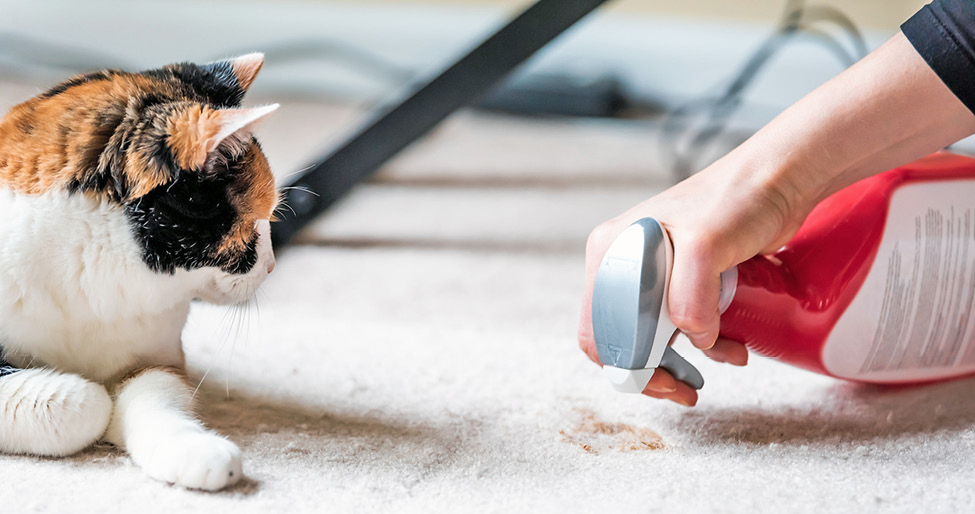Cat urine is the gift that keeps on giving. You clean it up, everything seems fine, and then a week later, the area reeks again. What gives?
Urine is largely water, but it also has a lot of waste products. As urea—the organic portion of urine—breaks down, it releases ammonia and then thiols, both of which have a strong odor. Uric acid, another component of urine, does not dissolve well in water, which can make it difficult to wash away.
If urine sits for a while, it can crystallize as it dries, which makes cleaning more difficult, especially in carpet or fabrics. That’s why, even if you think a mess has been thoroughly cleaned, the odor may return.
Basic Cleaning Strategies
Basic strategies to follow when cleaning up cat pee, fresh or old, include:
Blot the area. Initially use a paper towel to blot the area. Wiping side to side can send the stain deeper in to the fibers.
Go big. Clean a larger area than where you can see soiling, as the edges may have dried and odor-producing molecules may be dispersed more widely than the primary stain.
Use enzymatic cleaners. Products marketed for cat urine stain and odor elimination target and break down the substances in the urine rather than just masking the odor. In studies that compared various cleaning methods for cat urine, enzymatic cleaners or ones with odor source chemical modifiers consistently win out.
Avoid ammonia-based cleaners. Cat urine breaks down into ammonia, so you don’t want your cleaning product to produce the same smell. It may encourage your cat to pee there again.
Test all cleaners. Spray a little of a new product in a discreet area to make sure it doesn’t damage your carpet or fabric.
For Super-Duper Smells
You may need to use multiple tools to target all aspects of the mess.
Pretreat. For carpet, sprinkle baking soda over the area, let it sit for several minutes, and then follow up with vinegar (fizzing is normal!). For blankets and clothing, soak the item in an oxygen bleach product, following label directions for how to dilute your product.
Initial odor removal. Mix a few tablespoons of hydrogen peroxide with a drop or two of liquid dish soap and apply it to the soiled carpet. Rub the mixture into the carpet, then blot thoroughly. For blankets and clothes, run a wash cycle with cold water and vinegar.
Air dry. A fan can help dry carpets. Hang dry clothing and fabrics.
Enzyme treatment. For carpets, soak the area with an enzymatic cleaner and then let it air dry again, which can take a day or two. For clothing and fabrics, wash again with an enzyme-based detergent.
In some cases, it may be necessary to repeat the enzyme cleaner step, particularly if you notice an odor when the weather turns humid.
Extreme situations may call for drastic measures, especially if a cat has been urinating in a particular spot for a long time. In these cases, the carpet pad and/or baseboards may need replacement to eliminate the odor.




